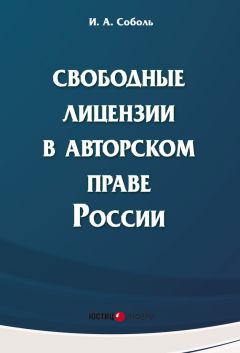Елена Беликова - Английский язык
На сайте mybooks.club вы можете бесплатно читать книги онлайн без регистрации, включая Елена Беликова - Английский язык. Жанр: Справочники издательство неизвестно,. Доступна полная версия книги с кратким содержанием для предварительного ознакомления, аннотацией (предисловием), рецензиями от других читателей и их экспертным мнением.
Кроме того, на сайте mybooks.club вы найдете множество новинок, которые стоит прочитать.

Елена Беликова - Английский язык краткое содержание
Английский язык читать онлайн бесплатно
Within the cortex each minute artery presents along its course a convoluted knot, called a glomerulus; the branch which enters the knot is the afferent vessel, that which leaves is she efferent vessel. Each glomerulus project into the dilated end of its corresponding renal tubule, from which it is separated by a thin layer of cells called glomerular (Bowman s) capsule; glomerulus plus capsule form a renal (Nalpighian) corpuscle. The cortex contains multitudes of such corpuscles, each giving rise to a tubule which passes down into the medul la and back again in the so-called loop of Henle. Back in, the cortex loop ends in a functional tubule which joins а larger collecting tube. Ultimately, a number of collecting tubes combine to form an excretory tube, which opens at the ареx of a papilla into a renal calyx. The efferent vessel from the glomerulus accompanies the loop of Henle, supply ing the tubule on the way and finally ends in a small vein. A renal corpuscule plus its complement of tubules and blood vessels is called a renal unit, or nephron; there are said to be one million such units in each kidney, their tubing totaling a length of some twenty miles.
New wordsbean-shaped organ – орган в форме боба
four inches long – 4 дюйма в длину
two inches wide – 2 дюйма в ширину
peritoneum – брюшина
lumbar – поясничный
renal cortex – корковый слой
renal medulla – мозговой слой
fibrous – волокнистая
dilated – расширенный
to be separated – быть разделенным
loop of henle – петля Генле
52. Acute renal failure
The two major mechanisms may participate in association between intratubular hemorrage and nephron damage in acute renal failure. The first mechanism is direct nephrotoxicity from hemoglobin, because intratubular degradation of erythrocytes releases heme and iron which are toxic to cells. The second mechanism is hypoxic damage induced by regional vasoconstriction because heme avidly binds the potent vasodilator nitric oxide.
Intratubular degradation of hemoglobin releases heme containing molecules and eventually free iron. These breakdown products, also elaborated from myoglobin, probably play an important role in the pathogenesis of acute tubular necrosis. Endocytic reabsorption from the tubular him en of filtered free hemoglobin or myoglobin may be a major pathway to proximal tubular damage in pigment nephropathy. In addition, free iron promotes the formation of oxygen free radicals, lipid peroxidation and cell death Another source of toxic iron is from the breakdown of intracellular cytochrom P-450 under hypoxic condition. One of the most potent intrarenal vasodilator system is nitric oxide, produced from L-arginine in vascular endothelium. smooth muscle and tubular calls, causing Vascular smooth muscle relaxation through the induction of intracellular cyclic GMP. Blocking nitric oxide synthesis causes profound vascular constriction, systemic hypertension and a marked decline in renal blood flow. Endothelial dysfunction with reduced nitric oxid production may underlie the defective regional vasodilation in diabetes and atherosclerosis, predisposing to renal ischemia and nephrotoxic insult.
Hemoglobin avidly binds nitric oxide and ingibits nitrovasodilation. The presence of large pool of hemoglobin in the tubular lumen could therefore affect the vasomotor balance of kidney circulation: intrarenal vasoconstriction is likely to be most pronounced and most significant in the medulla., because the ratio of tubular mass to vessels surface may be particularly high in this region. The medulla normally functions at low oxygen tension, because of limited medulla blood flow and counter-current exchange of oxygen. Inhibinion of nitric oxide synthesis induces severe and prolonged outer medullary hypoxia and predisposes to tubular necrosis Unfortunately, biopsy specimens of glomerulonephritis associated with acute tubular necrosis do not provide the precise distribution of the tubular lesions.
In chronic glomerulonephritis tubulo-interstitiaJ damage has often been reported as correlate of kidney function and also its best prognostic marker. Glomerular obsolescence deprives the renal parenchyma from nutritional blood flow, leading to tubule-interstitial fibrosis in medullary rays and outer medulla. Proteinuria imposes to the proximal tubules a constant burden of reabsorption and catabolism of albumin and other proteins from the tubular lumen, which have been suggested to cause cellular injury.
New wordsnephron – нефрон
intratubular – внутриканальцевый
heme – гем
tubular necrosis – канапьцевый некроз
reabsorption – реабсорбция
proteinuria – протеннурия
53. Iron in the body
It is accepted that the total amount of iron in the body is between 2 and 5 g., varying with body-weight and hemoglobin level; about two-thirds of this is in the form of hemoglobin and about 30 % is storage iron; iron in myо-globin and enzymes makes up the small remaining fraction together with iron in transport, which is only 0,12 %. There is a big difference between the sexes: in the adult male the total iron is about 50 mg. per kg. body-weight. But in the adult female the figure is only 35 mg. per kg., mainly be cause the normal blood-level of hemoglobin is lower than in the male. Iron exists in the body mainly in two forms: firstly, as heme in hemoglobin, and cytоchrome concerned with the utilization of oxygen; and secondly, bound to a protein without heme formation, as storage and transport iron. Iron in the body has a very rapid turnover, since some 3 million red blood cells are broken down per second and the greater part of the iron released is returned to the bone marrow and re-formed into fresh hemoglobin; some 6,3 g. of hemoglobin containing 21 mg. of iron is handled this way every 24 hours.
The amount of iron in the body is regulated by control of absorption, since excretion is very small. The amount of iron absorbed from food differs with different foodstuffs, so the com position of the diet is important. Absorption can be increased in the normal Individual when the blood-hemoglobin is lower than normal and is the iron stores are low. Iron stores are normally lower in women than men and so they tend to absorb more iron. Iron absorption can decrease in older persons, especially in those over 60. Many estimates have agreed that the average Western diet pro vides between 10 and 15 mg. of iron daily, of which only 5 – 10 % is absorbed.
Iron absorption takes place mainly in the upper jejunum, though some is absorbed in all parts of the small intestine and even in the colon. Iron in food is mostly in ferric form and must bе reduced to the ferrous form before it can be absorbed; this reduction begins in the stomach – though very little is absorbed there – and continues in the small intestine. The iron is absorbed via the brush-border of the intestine and then may take one of two paths; it is either passed into the blood, where it combines with a globulin, and passes to the marrow or to storage sites; or it combines with the protein, which is then deposited in the intestinal cells.
Iron is lost mostly through the gastrointestinal tract by way of red cells and intestinal cells containing iron lost in the constant desquamation from the intestinal mucosa.
New wordsiron – железо
varying – изменение
hemoglobin – гемоглобин
storage – хранение
myоglobin – миоглобин
fraction – фракция
together – вместе
body-weight – масса тела
desquamation – десквамация
54. Atherosclerotic mechanisms
Pivotal mechanisms involved in atherogenesis include.
1. Focal intimal influx and accumulation of plasma lipoproteins at lesion-prone sites.
2. Focal intimal monocyte-macrophage recruitment.
3. Generation within the intima of reactive oxygen species of free radicals by smooth muscle cells, macrophages and endothelial cells.
4. Oxidative modification of intimal lipoproteins by these reactive oxygen species to produce such oxidatively modified lipoproteins species as oxidized LDL and Lp(a).
5. Foam cell formation due to the uptake of oxidatively modified lipoproteins by the non-down-regulating macrophage scavenger receptors.
6. Foam cell necrosis, most likely due to the cytotoxic effects of oxidatively modified LDL. This process gives rise to the extracellular lipid core, and is an important event in the transition from the reversible fatty streak to the less readily reversible, more advanced atherosclerotic lesion.
7. Smooth muscle cell migration to and proliferation in the arterial intima, a process in which platelet-derived growth factor is believed to act as a chemo oattractant. Fibroblast growth factors likely regulate smooth muscle cell proliferation.
8. Plaque rupture, primarily at sites of greatest macrophage density. Proteolytic enzymes released by macrophages may stimulate plaque rupture, which ultimately leads to mural or occlusive thrombosis. Thrombosis contributes significantly to the stages of plaque growth.
9. Autoimmune inflammation, likely the result of anti-genic epitopes of oxidized LDL. Lipoproteins, such as LDL and Lp(a), enter the subendothelial space and intercept free radicals generated by endothelial cells. Following oxidation, these charge-modified lipoproteins are taken up by the non-down-regulating macrophage scavenger receptors pathway, resulting in lipid-rich, cholesteryl ester rich foam cells. Concurrently, circulating monocytes continue to attach to the endothelium, attracted by the chem oattractant MCP-1, and oxidized LDL. The expression and synthesis of MCP-1 by endothelial and smooth muscle cells is augmented by oxidatively modified lipoproteins, allowing the process to continue.
The next phase in atherogenesis is the development of the classic fatty streak as result of the continued uptake of oxidatively modified LDL by the macrophage scavenger receptors with continuing foam cell formation. A few smooth muscle cells can also be seen apparently entering the subendothelial space and proliferating within the intima during this phase. The transitional phase of atherogenesis is characterized by necrosis of the foam cells and the formation of an extracellular lipid core. In this stage, there is an increase in both smooth muscle cells proliferation and collagen synthesis, and lesions continue to grow. As long as elevated low density lipoproteins are present in the circulation, the atherosclerosis process continues. Among the additional changes taking place is the influx of Tlymphocytes. The involvenment of an autoimmune inflammatory component becomes obvious in the late stages of lesion development and is reflected by a prominent lymphocytic infiltration of the adventitia.
New wordsatherogenesis – атерогенез
plaque – атеросклеротическая бляшка
lymphocytic – лимфотический
inflammatory – воспалительный
low density lipoproteins – липопротеины низкой плотности
55. Advances in blood component separation and plasma treatment for therapeutics
The separation of blood cells from plasma is done routinely by centrifugal techniques.
Membranes for plasma separation.
Membrane modules vary in surface area from about 0,15 to 0,8 m2. Membrane plasma separation is a relatively simple process. At relatively low transmembrane pressure (generally less than 50 mm Hg), adequate plasma fluxes can be achieved. Equipment requirements are only minimal and the operation is much akin to that for other extracorporeal treatment technologies as hemodialysis, hemofiltration and hemoperfusion.
Membrane of on-line plasma treatment.
Plasma exchange whether by centrifugal or membrane techniques requires that the plasma discarded be replaced by physiological solution, which in most cases is en albumin solution. Because essential plasma components as well as pathological ones, are removed during plasma exchange, techniques designed to remove only the pathological components would be highly desirable. Review of the disease states treated by plasma exchange reveals that mane of the marker solutes ere of f molecular weight larger (generally greater than 100 000 daltons) than albumin, suggesting membrane filtration as physical separation techniques for their removal.
With presently available membranes, selective passage of albumin (near 70 000 daltons) and lower molecular weight solutes with complete retention of larger molecular weight solutes is difficult to achieve. However, such a complete separation may not be desirable since many higher molecular weight solutes are normal components of plasma To apply some selectivity in the separation of the marker solutes with a high return to the normal constituents of plasma and thus no requirement for plasma product infusion, the technique of cryofiltration was applied.
Cryofiltration is the on-line technique of plasma treatment consisting of plasma cooling followed by membrane filtration. By cooling the plasma, cryogel is deposited on the membrane during the Filtration process. The cryogel has been shown to contain concentrated quantities of the marker solutes. Response to therapy in the majority of patients with rheumatoid arthritis has been from good to excellent. In treatments, decreases in marker solutes have been noted coupled with improvement in clinical symptomology.
Membrane technology appears very promising in the separation and treatment of plasma on-line. Chronic treatment therapies appear safe and well tolerated by the patients.
New wordscentrifugal technique – центрифужные технологии
plasma exchange – плазмообмен
therapeutic – терапевтический
metabolic – метаболический
multiple – множественный
extracorporeal – экстракорпоральный
56. Artificial oxygen carries
Artificial oxygen (O2) carries aim at improving O2 delivery Artificial O2 carries thus may be used as alternative to allogeneic blood transfusions or to improve tissue oxygenation and function of organs with marginal O2 supply. Artificial O2 carries can be grouped into modified hemoglobin (Hb) solutions and perfluorocarbon (PFC) emulsions. The native human Hg molecule needs to be modified in order to decrease O2 affinity and to prevent rapid dissociation of the native tetramer into dimers. The O2 transport characteristics of modified Hb solutions and PFC emulsions are fundamentally different. The Hb solutions exhibit a sigmoidal O2 dissociation curve similar to blood. In contrast, the PFC emulsions are characterised by a linear relationship between O2 partial pressure and O2 content. Hb solutions thus provide O2 transport and unloading capacity similar to blood. This means that already at a relatively low arterial O2 partial pressure substantial amounts of O2 are being transported. In contrast, relatively high arterial O2 partial pressures are necessary to maximize the O2 transport capacity of PFC emulsions. Modified Hb solutions are very promising in improving O2 transport and tissure oxygenation to a physiologically relevant degree. Because cross-matching is unnecessary, these solutions hold great promise as alternative to allogeneic blood transfusions and as O2 therapeutics, which might be of great value also in the prehospital resuscitation of trauma victims or in specific situations in intensive care medicine. In patients with a reduced cardiac contractility and normal or elevated mean arterial pressure Hb infusion may increase systemic and pulmonary vascular resistances with consequent reduction in , cardiac output. In contrast, in a previously healthy trauma victim, suffering from severe hypovolaemia due to massive haemorrhage, the combined effects of volume replacement, added O2 transport capacity, and mild vasoconstriction due to the infusion of a modified Hb solution may be beneficial.
Похожие книги на "Английский язык", Елена Беликова
Елена Беликова читать все книги автора по порядку
Елена Беликова - все книги автора в одном месте читать по порядку полные версии на сайте онлайн библиотеки mybooks.club.




